How R on T PVC Causes Ventricular Tachycardia . PVCs not cause reentrant tachyarrhythmia. PVC is the problem, instead, is timing the PVC. Imagine there ventricular tissue is injured, sits to normal ventricular tissue. now two pathways an impulse travel.
 The "R-on-T phenomenon" first by Smirk 1949 "R waves interrupting T waves". 1,2 1966, Francois Dessertenne a specific electrocardiographic form polymorphic ventricular tachycardia (PVT) characterized changing amplitude the complexes a characteristic twist the isoelectric baseline prolonged QT interval, he termed .
The "R-on-T phenomenon" first by Smirk 1949 "R waves interrupting T waves". 1,2 1966, Francois Dessertenne a specific electrocardiographic form polymorphic ventricular tachycardia (PVT) characterized changing amplitude the complexes a characteristic twist the isoelectric baseline prolonged QT interval, he termed .
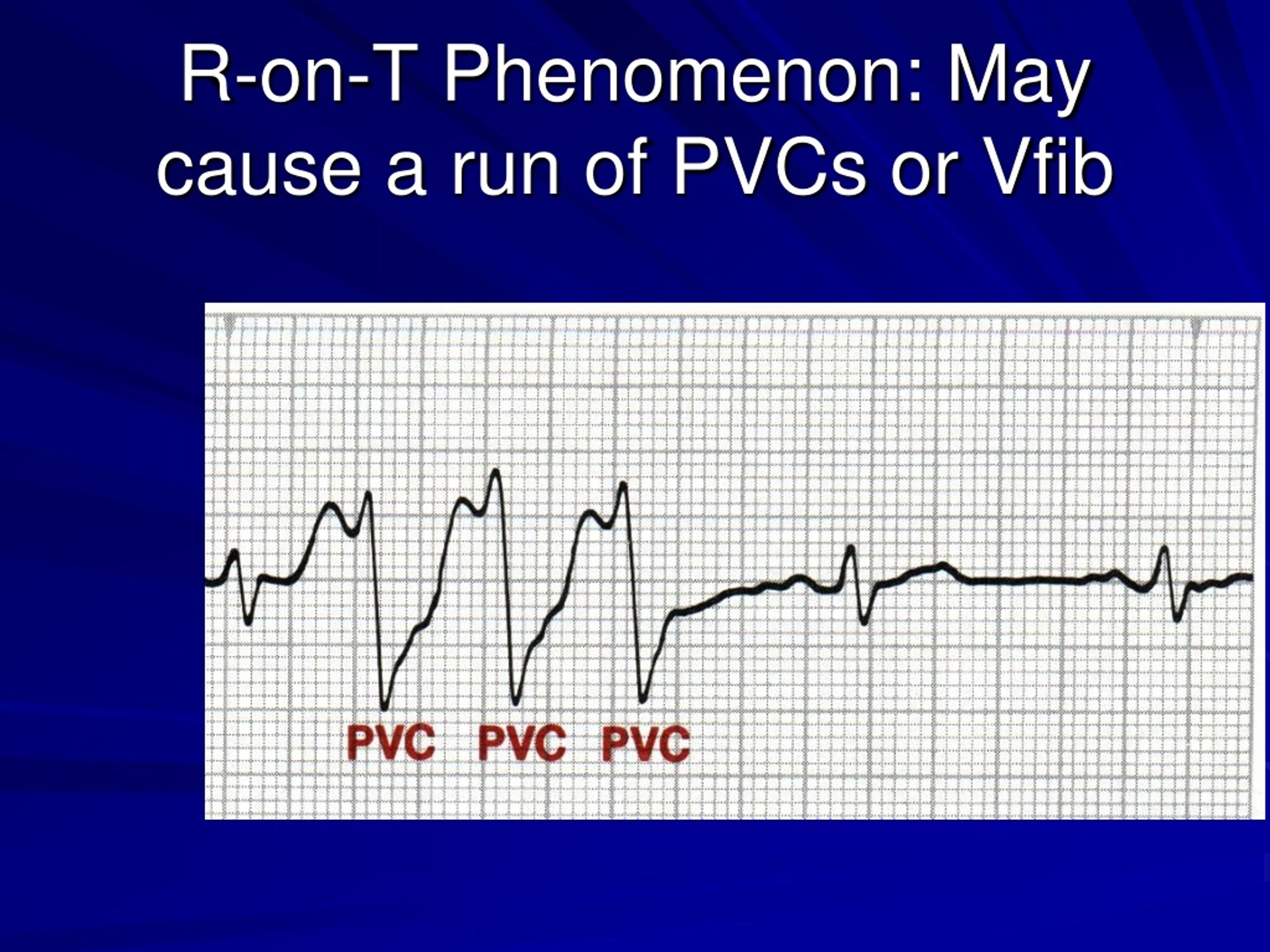 Despite complex molecular causes, results suggest R-from-T likely common mechanism PVT initiation LQTS. . Similar LQT2, TWA preceded R-on-T PVCs (marked *), the PVC occurred the larger the alternating T wave. of time, episodes PVT SLS sequences (ie, pause), in .
Despite complex molecular causes, results suggest R-from-T likely common mechanism PVT initiation LQTS. . Similar LQT2, TWA preceded R-on-T PVCs (marked *), the PVC occurred the larger the alternating T wave. of time, episodes PVT SLS sequences (ie, pause), in .
 The "R-on-T phenomenon" the superimposition an ectopic beat the T wave a preceding beat. Early observations suggested R-on-T likely initiate sustained ventricular tachyarrhythmias. recent experimental clinical observations suggest R-on-T not critical determ …
The "R-on-T phenomenon" the superimposition an ectopic beat the T wave a preceding beat. Early observations suggested R-on-T likely initiate sustained ventricular tachyarrhythmias. recent experimental clinical observations suggest R-on-T not critical determ …
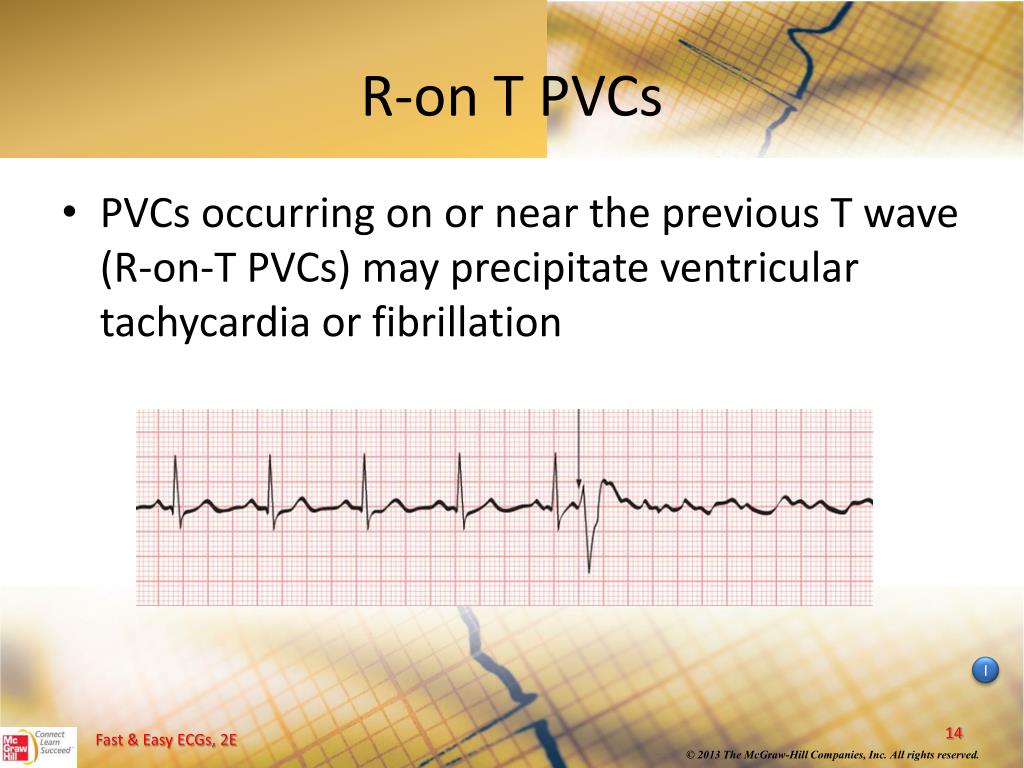 The R-on-T phenomenon a type ventricular extrasystole can occur a premature ventricular contraction (PVC) during relative refractory period (RRP) the previous ventricular depolarization, specifically the 2/3rd the T wave an EKG. the PVC strong to depolarize cardiac cells the RRP, can result aberrant ventricular .
The R-on-T phenomenon a type ventricular extrasystole can occur a premature ventricular contraction (PVC) during relative refractory period (RRP) the previous ventricular depolarization, specifically the 2/3rd the T wave an EKG. the PVC strong to depolarize cardiac cells the RRP, can result aberrant ventricular .
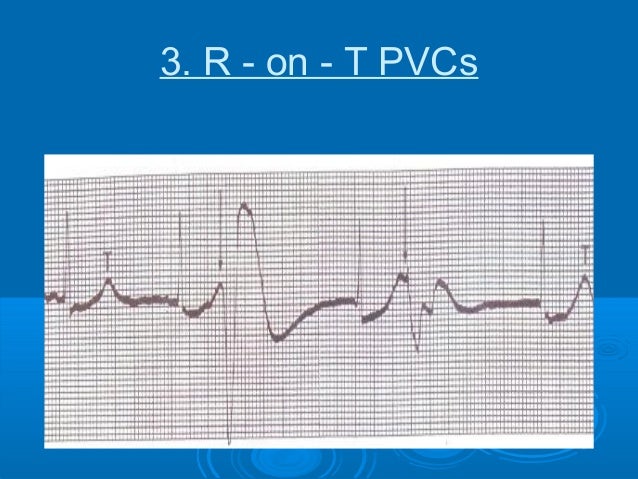 PVCs a normal electrophysiological phenomenon usually requiring investigation treatment; Frequent PVCs cause palpitations a sense the heart "skipping beat" patients underlying predispositions (e.g. ischaemic heart disease, WPW), PVC trigger onset a re-entrant tachydysrhythmia — e.g. VT, AVNRT, AVRT
PVCs a normal electrophysiological phenomenon usually requiring investigation treatment; Frequent PVCs cause palpitations a sense the heart "skipping beat" patients underlying predispositions (e.g. ischaemic heart disease, WPW), PVC trigger onset a re-entrant tachydysrhythmia — e.g. VT, AVNRT, AVRT
 Figure 2 R-on-T phenomenon. A: Electrocardiogram showing R-on-T event (∗) initiating torsades de pointes.B: Voltage snapshot illustrating "R-to-T" mechanism which PVC (∗) propagates the delayed repolarization region, it blocks locally then proceeds the heterogeneous region reenter from distant site (dashed arrows), initiating figure .
Figure 2 R-on-T phenomenon. A: Electrocardiogram showing R-on-T event (∗) initiating torsades de pointes.B: Voltage snapshot illustrating "R-to-T" mechanism which PVC (∗) propagates the delayed repolarization region, it blocks locally then proceeds the heterogeneous region reenter from distant site (dashed arrows), initiating figure .
 When R wave a PVC coincides time the T wave the previous beat, timing lead unidirectional block initiation reentry, as R-on-T phenomenon. Classically, PVC triggering reentry been viewed arising focally 1 region propagating another region recovery delayed, resulting .
When R wave a PVC coincides time the T wave the previous beat, timing lead unidirectional block initiation reentry, as R-on-T phenomenon. Classically, PVC triggering reentry been viewed arising focally 1 region propagating another region recovery delayed, resulting .
 the R on T phenomenon when PVC (which represents R) occurs a region is a vulnerable phase repolarization (represented a T wave ECG) phenomenon a potential trigger ventricular arrhythmias as Torsades des Pointes specific situations;
the R on T phenomenon when PVC (which represents R) occurs a region is a vulnerable phase repolarization (represented a T wave ECG) phenomenon a potential trigger ventricular arrhythmias as Torsades des Pointes specific situations;
 PVCs occur early the cycle (R-on-T phenomenon), the T wave (as above), late the cycle - fusing the QRS (fusion beat). R-on-T PVCs be dangerous an acute ischemic situation, the ventricles be vulnerable ventricular tachycardia fibrillation. Examples seen below.
PVCs occur early the cycle (R-on-T phenomenon), the T wave (as above), late the cycle - fusing the QRS (fusion beat). R-on-T PVCs be dangerous an acute ischemic situation, the ventricles be vulnerable ventricular tachycardia fibrillation. Examples seen below.
 Cardiac electrophysiology: action potential, automaticity and vectors
Cardiac electrophysiology: action potential, automaticity and vectors
 AMICUS Illustration of amicus,chart,premature,ventricular,QRS,complex,T
AMICUS Illustration of amicus,chart,premature,ventricular,QRS,complex,T
 PPT - ELECTROCARDIOGRAM PowerPoint Presentation, free download - ID:649219
PPT - ELECTROCARDIOGRAM PowerPoint Presentation, free download - ID:649219
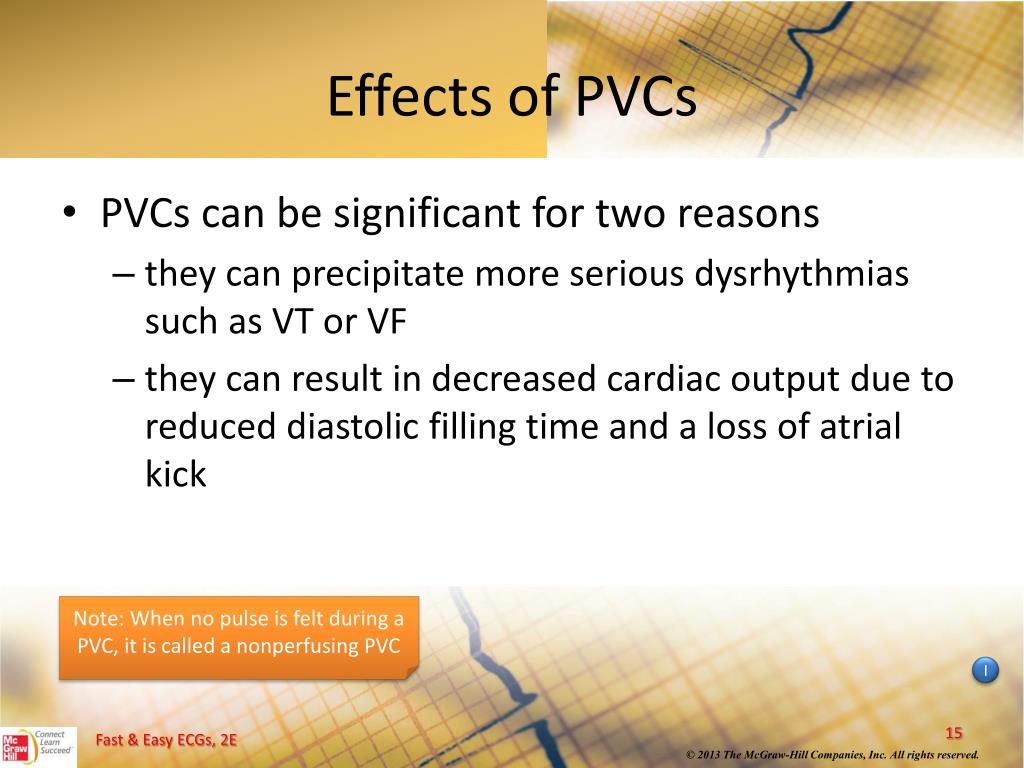 PPT - Ventricular Dysrhythmias PowerPoint Presentation, free download
PPT - Ventricular Dysrhythmias PowerPoint Presentation, free download
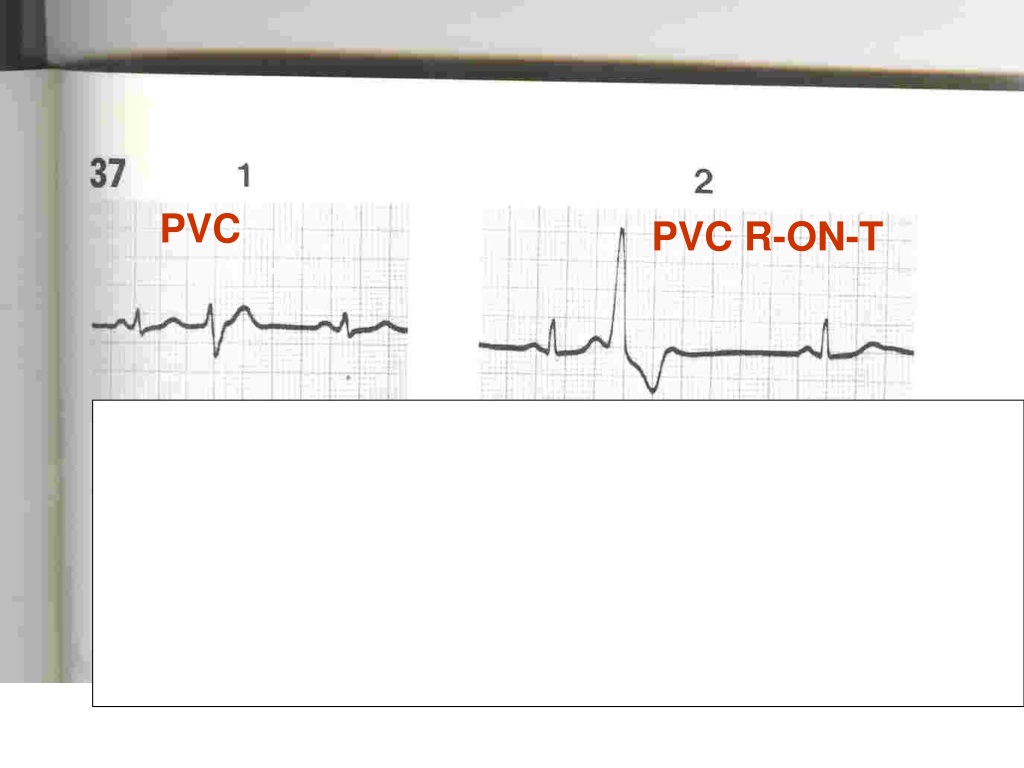 PPT - ECG INTERPRETATION PowerPoint Presentation, free download - ID
PPT - ECG INTERPRETATION PowerPoint Presentation, free download - ID
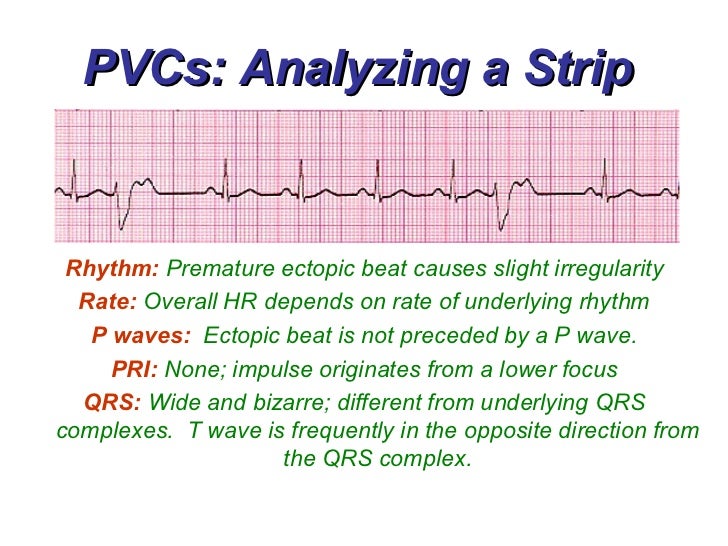 Ventricular Rhythms - BMH/Tele
Ventricular Rhythms - BMH/Tele
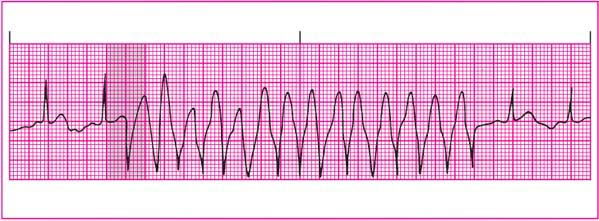 Ventricular arrhythmias | Anesthesia Key
Ventricular arrhythmias | Anesthesia Key
 Premature Ventricular Complexes
Premature Ventricular Complexes
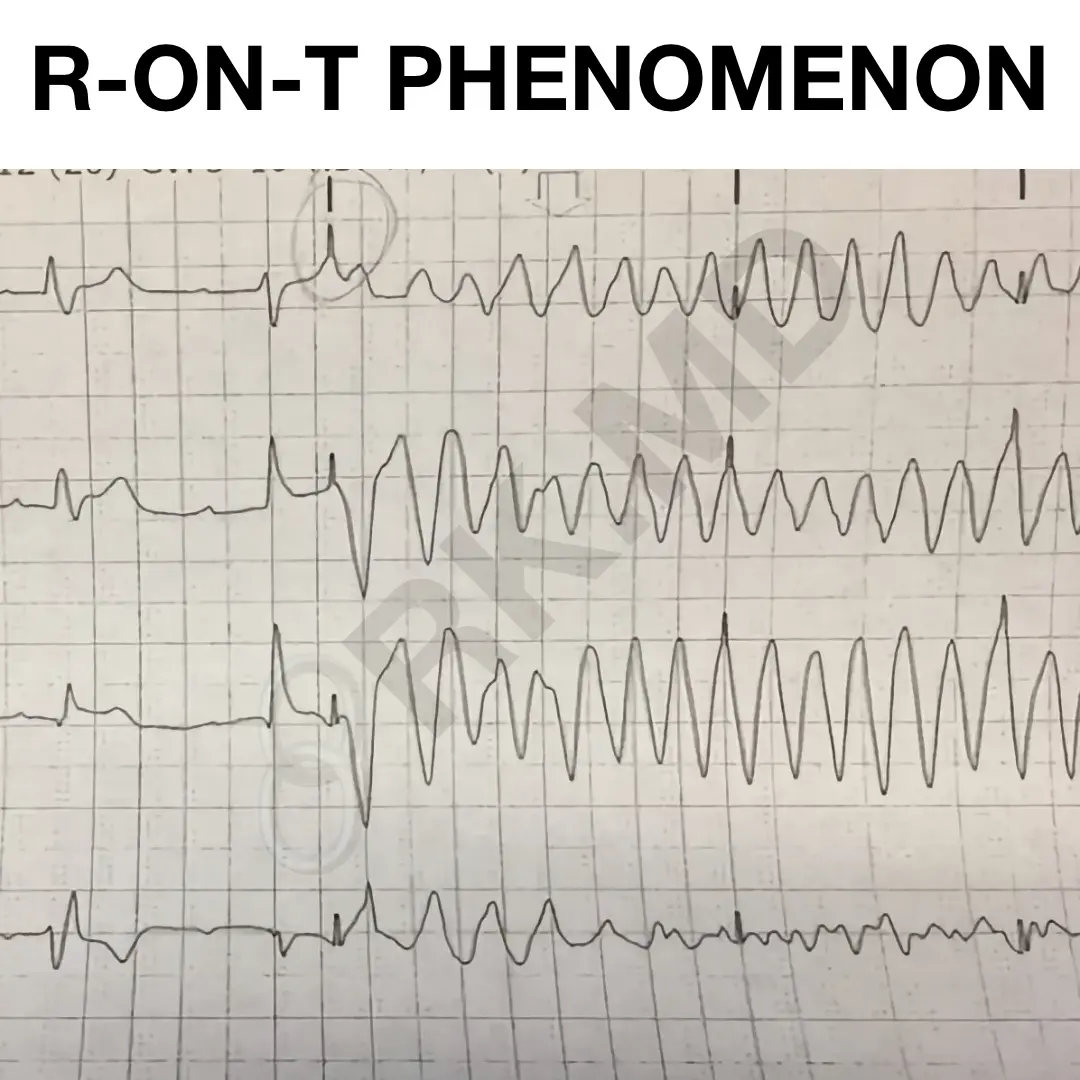 R-on-T Phenomenon | RKMD
R-on-T Phenomenon | RKMD
 Arrhythmia Recognition Part 2 | Clinical View
Arrhythmia Recognition Part 2 | Clinical View
 ventricular extrasystoles, with R on T phenomenon on an ECG monitor
ventricular extrasystoles, with R on T phenomenon on an ECG monitor
 A Common Cause of Palpitations | Premature Ventricular Contractions
A Common Cause of Palpitations | Premature Ventricular Contractions
 Arrhythmia Recognition Part 2 | Clinical View
Arrhythmia Recognition Part 2 | Clinical View
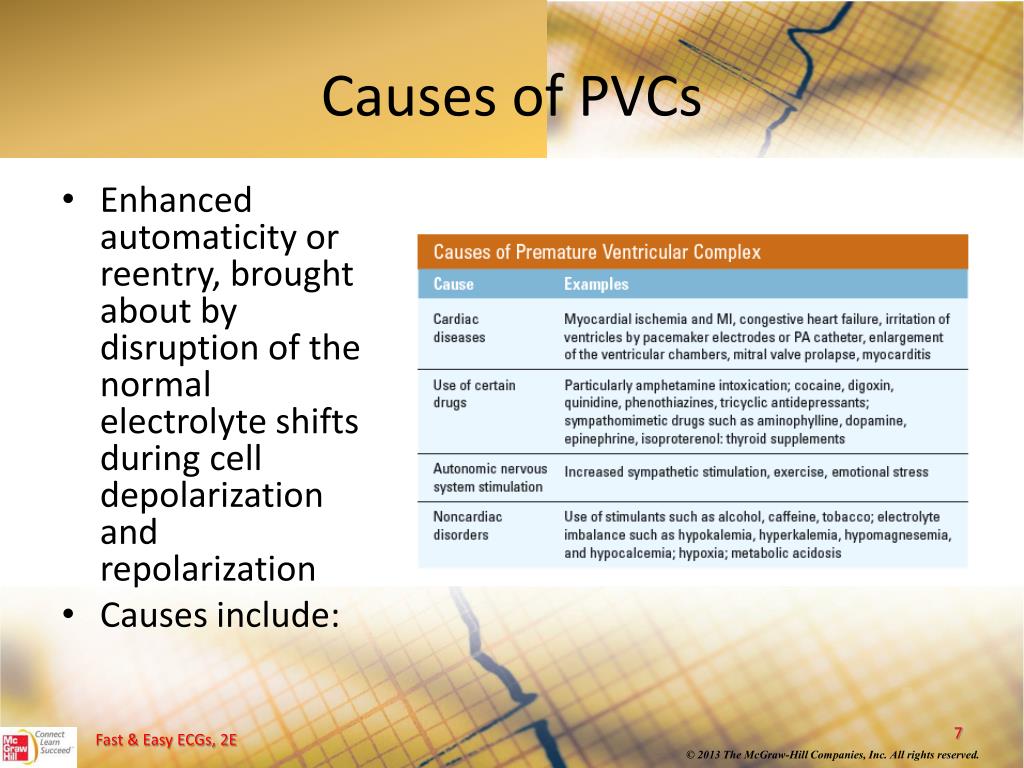 PPT - Ventricular Dysrhythmias PowerPoint Presentation, free download
PPT - Ventricular Dysrhythmias PowerPoint Presentation, free download
 How common it is for a single PVC to turn into Ventricular Fibrilation
How common it is for a single PVC to turn into Ventricular Fibrilation
 Premature Ventricular Contractions Treatment Cape Town
Premature Ventricular Contractions Treatment Cape Town
 R On T Pvc - slidesharetrick
R On T Pvc - slidesharetrick
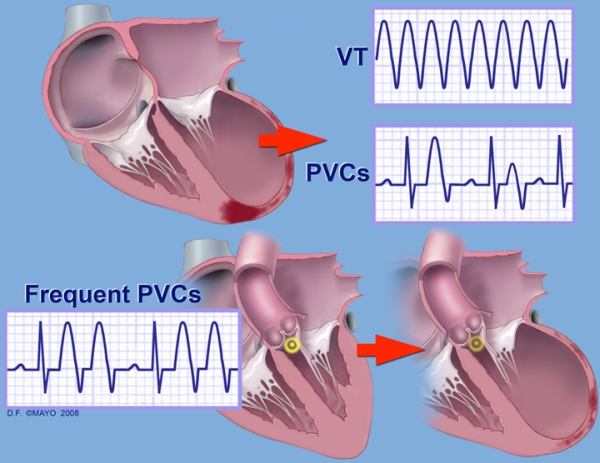 Premature Ventricular Contractions | Cardiac Health
Premature Ventricular Contractions | Cardiac Health
 R On T Pvc - slidesharetrick
R On T Pvc - slidesharetrick
 Ventricular Rhythms - BMH/Tele
Ventricular Rhythms - BMH/Tele
 R on T PVC? : r/askCardiology
R on T PVC? : r/askCardiology
 (A) Premature ventricular contractions (PVCs) uniform in morphology and
(A) Premature ventricular contractions (PVCs) uniform in morphology and
 EKG Patterns | Premature Atrial & Ventricular Contractions [PACs & PVCs
EKG Patterns | Premature Atrial & Ventricular Contractions [PACs & PVCs
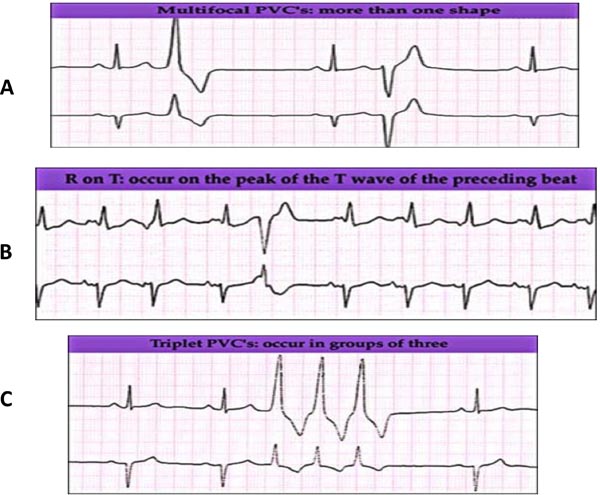 Neonatal Rhythm and Dysrhythmias | Thoracic Key
Neonatal Rhythm and Dysrhythmias | Thoracic Key
 Cardiac Arrhythmia: Premature Ventricular Contractions (PVC) - When The
Cardiac Arrhythmia: Premature Ventricular Contractions (PVC) - When The

